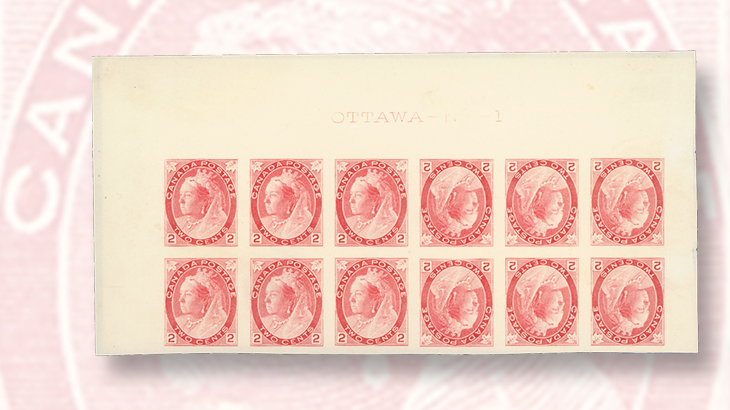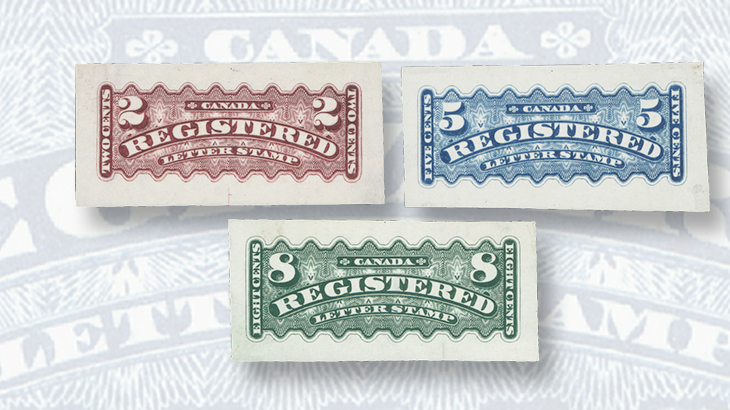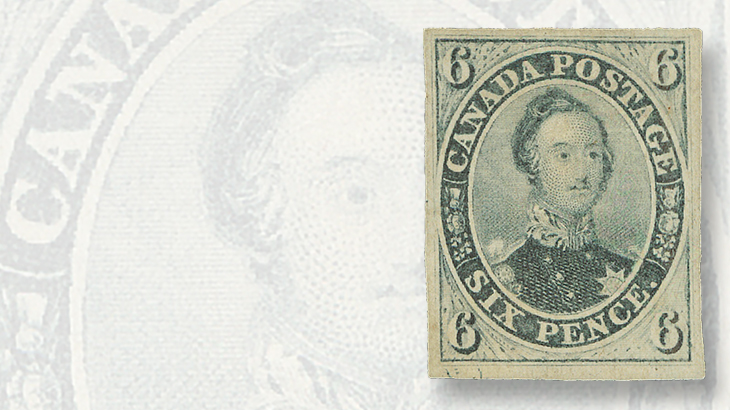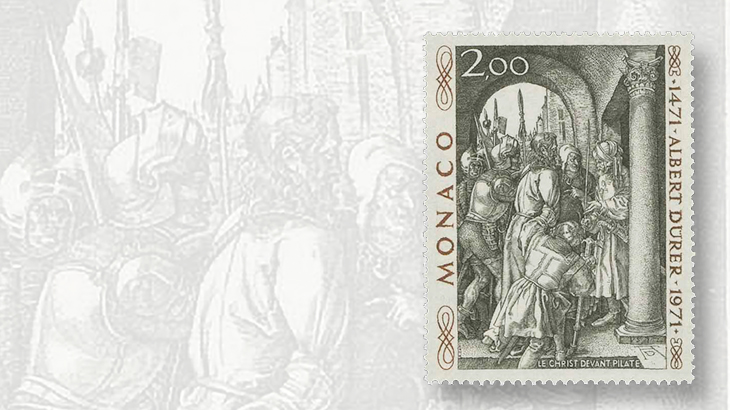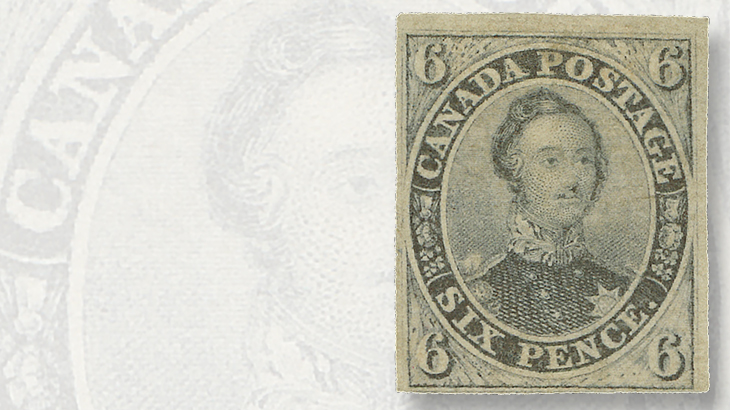Auctions
Why a block of 2¢ Queen Victoria stamps topped $10K at Eastern sale
By Matthew Healey, New York Correspondent
Eastern Auctions held a sale of Canadian and worldwide stamps and postal history Oct. 28-29 in Halifax, Nova Scotia, Canada.
Featured items from the Baron collection of Canadian tete-beche stamps, imperforates, errors and first-day covers comprised the first part of the sale.
The very first lot was a beautiful block of 12 imperforate 2¢ Queen Victoria stamps, from the top of the press sheet. Six of the stamps are upside-down in relation to the other six, because the sheet was set up for the production of booklet panes.
Connect with Linn’s Stamp News:
Sign up for our newsletter
Like us on Facebook
Follow us on Twitter
The imperforate block (Scott 77e) is believed to be the only one surviving with the plate imprint from the top of the sheet still attached. Ungummed as issued and with a couple of small faults, it sold for $14,375 Canadian, including the 15 percent buyer’s premium charged by Eastern on all lots, or about U.S. $10,725. All results here are shown in U.S. dollars.
Most Canadian stamps prior to World War II were issued imperforate in small quantities, either as plate proofs, to barter for classic stamps for the post office museum or to give as gifts to dignitaries. These imperfs often lacked gum.
A vertical imperf pair of 1898 2¢ Imperial Penny Postage stamps, showing the British Empire in red sprawled across a map of the world with lavender oceans (Scott 85a), without gum as issued, sold for $240.
Another pair of the same stamp, entirely missing the red color, showed part of the top-margin imprint and, unusually, had full original gum on the back. This unlisted variety of Scott 85a went for $1,550.
A rare imperf pair of the 1930 2¢ King George V Arch definitive (variety of Scott 164) was “likely the result of a major pre-perforation corner fold,” according to the auction description. With large margins, especially at right, and no gum, it went for $12,000. The pair had been in the consignor’s family since 1981.
A more modern error, on the 1963 4¢ Queen Elizabeth II definitive of the “Cameo” series, was missing the perforations between the middle two stamps (Scott 408a) in a coil strip of four.
Never hinged, it was described as the finer of the two known examples of this error. Recently certified as authentic by the Vincent Graves Greene Foundation, Canada’s leading expertizer, the strip sold for $18,000.
Going back to classic Canada in the next part of the sale, a couple of unused 1851 6-penny Prince Albert stamps brought high realizations. This design exists on both laid paper (Scott 2) and wove paper (5). The former appears on the back of the stamp as faint, thick grey lines while the latter shows as a fine mesh pattern.
“Seasoned collectors are well aware that the Six Pence Consort on laid paper in mint, original-gum condition is much scarcer than the more highly catalogued Twelve Pence black,” the auction firm reminded bidders.
Indeed, the 6d on laid paper, in fine-to-very-fine condition with original gum, went for $36,450, a high percentage of its catalog value.
The 6d on wove paper, sound with large margins though lacking gum, went for $25,750, also a strong percentage of its catalog value, doubtless reflecting the fact that “only a handful of the very few existing sound, unused examples feature such large margins.”
A set of trial-color die proofs for Canada’s three registration stamps (Scott F1-3), issued from 1875 to 1888, were described as one of only two sets known.
The 2¢ proof is a deep lake color (instead of orange), while the 5¢ and 8¢ proofs swapped the dull blue and dark green of the issued stamps. On India paper with large, even margins, the trio was knocked down together for a total of $40,750.
Among worldwide stamps, an unissued version of a 1972 2-franc stamp of Monaco was offered in mint, never-hinged condition. The reason for its withdrawal was a mistake in the design: the inscription at right reads “Albert Durer” instead of the correct “Albrecht Durer”. The corrected version was issued as Scott 817; the unissued error sold for $515.
MORE RELATED ARTICLES
Headlines
-
US Stamps
Oct 7, 2024, 12 PMVasiliauskas named president of Mystic Stamp Co.
-
US Stamps
Oct 6, 2024, 5 PMApgar souvenir card available
-
US Stamps
Oct 6, 2024, 4 PMFirst Continental Congress and U.N. stamps receive Scott catalog numbers
-
World Stamps
Oct 5, 2024, 1 PMCanada Post continues Truth and Reconciliation series
